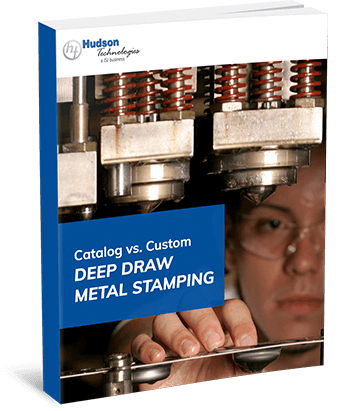What Is Deep Draw?
- Home
- Metal Stamping FAQ (Farley Answers Questions)
- What Is Deep Draw?
To be considered deep drawn, the height of the case is usually at least two times the diameter. Deep drawn cases are used to enclose technology, especially in demanding environments or whenever tight tolerances and reliability are important.
The deep draw process starts when a flat piece of metal, called a blank or disc, is placed over a cavity called a die. A punch then forces the metal through the die, forming it into a shape.
These precision punches and dies are known as tooling. The tooling is set up in power presses which produce the tonnage, or energy, needed to force the material through the draw process.
During the draw process the material moves into the shape of the die. The flow of material is controlled through pressure applied to the blank and lubrication applied to the die or the blank.
Each draw operation is a separate step and each step reduces the diameter and increases the height of the part. It may take five or more draws, also called reductions, to achieve the final shape.
Many factors, including material type and thickness, corner and bottom radii, and shape, determine the number of reductions required to make an enclosure.
Below is an infographic that outlines the different deep draw stamping modification that we can manufacture:































